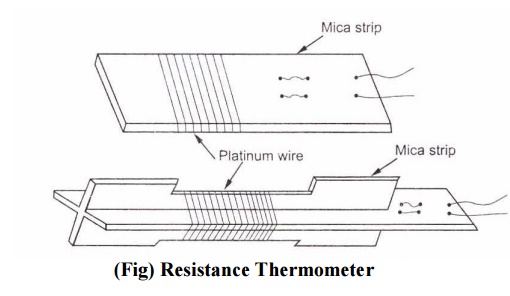Chapter: Measurements and Instrumentation : Transducers and Data Acquisition Systems
Resistance Thermometers: Construction, Advantages, Limitations
Construction of Resistance Thermometers
Ø The wire resistance thermometer usually consists of a coil wound on a mica or ceramic former, as shown in the Fig.
Ø The coil is wound in bifilar form so as to make it no inductive. Such coils are available in different sizes and with different resistance values ranging from 10 ohms to 25,000 ohms.

Advantages of Resistance Thermometers
1. The measurement is accurate.
2. Indicators, recorders can be directly operated.
3. The temperature sensor can be easily installed and replaced.
4. Measurement of differential temperature is possible.
5. Resistance thermometers can work over a wide range of temperature from -20’ C to + 650° C.
6. They are suitable for remote indication.
7. They are smaller in size
8. They have stability over long periods of time.
Limitations of Resistance Thermometers
1. A bridge circuit with external power source is necessary for their operation.
2. They are comparatively costly.
Related Topics